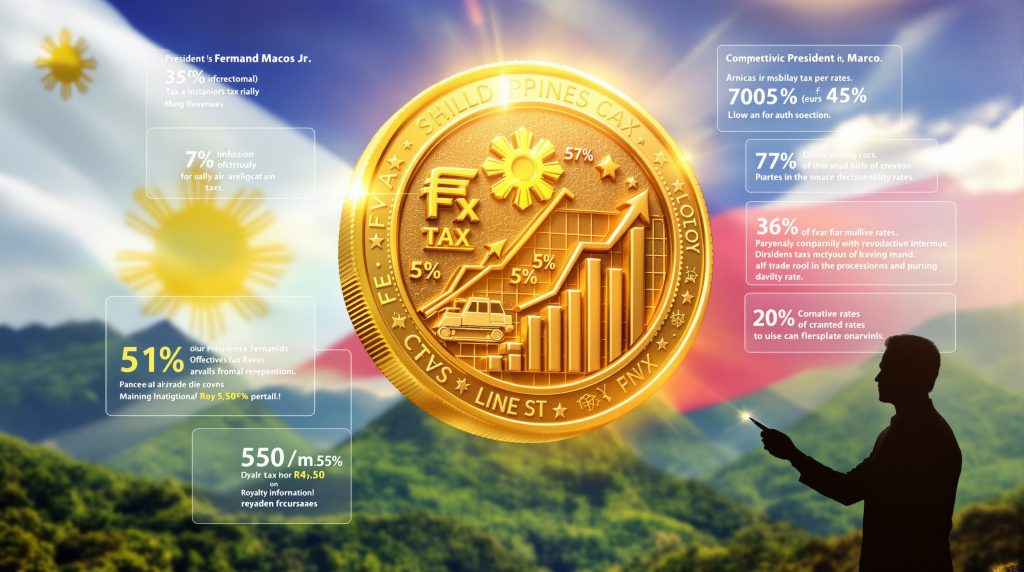Philippines Mining Tax Reform: How the New Law Ensures Fairer Revenue Sharing
The Philippines has implemented a landmark mining tax reform through Republic Act 12253, officially titled the "Enhanced Fiscal Regime for Large-Scale Metallic Mining Act." Signed into law by President Ferdinand Marcos Jr. on September 4, 2025, this legislation fundamentally transforms how mining companies are taxed, creating a more equitable distribution of mineral wealth between corporations and the Filipino people.
President Marcos emphasized during the signing ceremony: "We are putting into place a system that is fairer, that is clearer and more responsive to the needs of both our people and the environment."
Why Was Mining Tax Reform Needed in the Philippines?
The Fragmented Previous System
Before RA 12253, the Philippines operated under a complex and inconsistent mining tax framework that:
- Applied different tax rates depending on the type of mining agreement
- Only required royalty payments from mines located inside designated mineral reservations
- Created uneven revenue distribution that disadvantaged the government
- Lacked transparency in how mining profits were calculated and reported
Untapped Mineral Potential
The Philippines sits on approximately $1 trillion worth of untapped mineral reserves, including copper, gold, nickel, zinc, and silver. However, government data shows less than 3% of the country's 9 million hectares with high mineral potential are currently under mining tenements.
This reform aims to maximize benefits from this natural wealth while ensuring environmental protection and mine reclamation innovation. The country's mineral exports totaled $7.32 billion in 2023, slightly down from $7.53 billion in 2022, according to the Mines and Geosciences Bureau.
Key Components of the New Mining Tax System
1. Unified and Progressive Tax Structure
The new Philippines new mining tax law introduces a simplified tax regime that applies uniformly across all large-scale metallic mining operations, regardless of their agreement type:
| Location | Royalty Rate Structure |
|---|---|
| Outside Mineral Reservations | Margin-based royalty of 1-5% (based on profitability) |
| Below Margin Threshold | Minimum royalty of 0.1% on gross output |
| Inside Mineral Reservations | Fixed 5% royalty (unchanged) |
2. Windfall Profits Taxation
A tiered windfall tax ranging from 1% to 10% now applies when income margins exceed 30%. This mechanism ensures the government captures a greater share of profits during commodity booms and high-price periods, similar to recent VAT policy updates in other mining jurisdictions.
3. Ring-Fencing Requirement
One of the most significant changes is the introduction of a ring-fencing rule that requires each mining project to be taxed as a separate entity. As President Marcos noted:
"Gone are the days when a mining contractor can bury its profits beneath the weight of losses. No longer can we use one project's failure to conceal another project's success."
This prevents mining companies from offsetting losses from one project against profits from another, closing a major tax avoidance loophole.
How Will the New Tax System Impact Government Revenue?
Projected Financial Benefits
The new tax regime is expected to generate:
- An average of ₱6.26 billion ($110.56 million) in additional annual revenue
- Approximately ₱25 billion in total additional revenues from 2025 to 2028
- More stable and predictable income streams for both national and local governments
Revenue Allocation
The law designates specific uses for mining revenues:
- 10% of royalties from mines within mineral reservations will fund mineral exploration, research, monitoring, and enforcement
- Key beneficiary agencies include the Mines and Geosciences Bureau (MGB) and Metals Industry Research and Development Center (MIRDC)
- Local communities hosting mining operations will receive enhanced benefits
How Does the Law Enhance Transparency and Governance?
Accountability Measures
RA 12253 strengthens oversight through:
- Mandatory public disclosure of mining data and financial information
- Stricter monitoring and auditing of mineral sales and exports
- Establishment of multi-stakeholder accountability groups
- Regular reporting requirements for mining companies
Debt-to-Equity Ratio Limits
To prevent tax avoidance through excessive debt financing, the law implements:
- A 2:1 debt-to-equity ratio limit
- Restrictions on deduction of related-party borrowing costs
- Clearer guidelines on allowable expenses and deductions
What Does This Mean for Mining Investment in the Philippines?
Investor Confidence
The simplified and more transparent tax structure is designed to:
- Provide greater fiscal stability and predictability for investors
- Create a more competitive environment aligned with international standards
- Reduce administrative complexity and compliance costs
- Attract new investments, particularly in critical minerals needed for green technology
Industry Response
Initial industry response has been cautiously positive, with mining companies acknowledging the need for reform while expressing concerns about maintaining international competitiveness. According to the Philippine government's official statement, the new framework aims to balance revenue generation with sustainable mining practices.
How Does This Compare to Mining Tax Regimes in Other Countries?
Regional Context
The Philippines' new mining tax system brings the country more in line with other mineral-rich nations in the Asia-Pacific region:
| Country | Key Mining Tax Features |
|---|---|
| Australia | Resource rent tax, state-based royalties |
| Indonesia | Progressive royalty rates, export duties on unprocessed minerals |
| Papua New Guinea | Profit-based mining levy, fixed royalties |
| Philippines (New) | Progressive royalty rates, windfall profit tax, ring-fencing |
Global Positioning
This reform positions the Philippines to better compete globally for mining investment while ensuring a fairer share of benefits for its citizens. The combination of margin-based royalties and windfall taxation represents a balanced approach that aligns with global best practices in mining taxation and industry evolution trends.
What Are the Environmental and Social Implications?
Sustainable Development Focus
While primarily a fiscal measure, the Philippines new mining tax law reinforces the government's commitment to:
- Environmentally responsible mining practices
- Greater benefits for local communities
- Long-term sustainability of the mining sector
- Balancing economic development with environmental protection
Community Impact
The increased revenue is expected to enhance funding for:
- Local infrastructure development
- Environmental rehabilitation projects
- Social development programs
- Indigenous peoples' welfare
What Challenges Remain in Implementation?
Regulatory Framework
Successful implementation will require:
- Development of detailed implementing rules and regulations
- Training of government personnel in new assessment methods
- Establishment of monitoring and compliance systems
- Coordination between national and local government units
Industry Adaptation
Mining companies will need to:
- Adjust financial planning and reporting systems
- Implement project-specific accounting procedures
- Adapt to new transparency requirements
- Potentially restructure operations to optimize under the new system
Conclusion: A New Era for Philippine Mining
The Enhanced Fiscal Regime for Large-Scale Metallic Mining Act represents a significant shift in how the Philippines manages its mineral wealth. By creating a more equitable, transparent, and simplified tax system, the government aims to maximize beneficiation opportunities from the country's estimated $1 trillion in untapped mineral resources while ensuring environmental protection and community development.
As President Marcos emphasized, transparency is now the rule in Philippine mining. This reform balances the need to attract investment with the imperative to ensure that the Filipino people receive their fair share of the nation's natural resources. For investors, understanding the investment strategy essentials in this new landscape will be crucial for success.
According to a detailed analysis from ABS-CBN News, the Philippines new mining tax law is expected to generate approximately P6.3 billion in additional revenue while strengthening government oversight of the sector.
Disclaimer: The economic projections and revenue estimates in this article are based on current market conditions and may vary depending on future commodity prices, production volumes, and other factors. Readers should consult with financial and legal experts before making investment decisions based on this information.
Further Exploration
Readers interested in learning more about mining regulations in the Philippines can explore related educational content from mining industry publications, which offer ongoing coverage of mining policy developments across the Asia-Pacific region.
Interested in Investing in the Next Major Mineral Discovery?
Discover why significant mineral finds can generate substantial returns by exploring Discovery Alert's dedicated discoveries page, where our proprietary Discovery IQ model delivers real-time alerts on ASX mineral discoveries, translating complex data into actionable investment insights. Begin your 30-day free trial today at https://discoveryalert.com.au/discoveries/ and position yourself ahead of the market.




